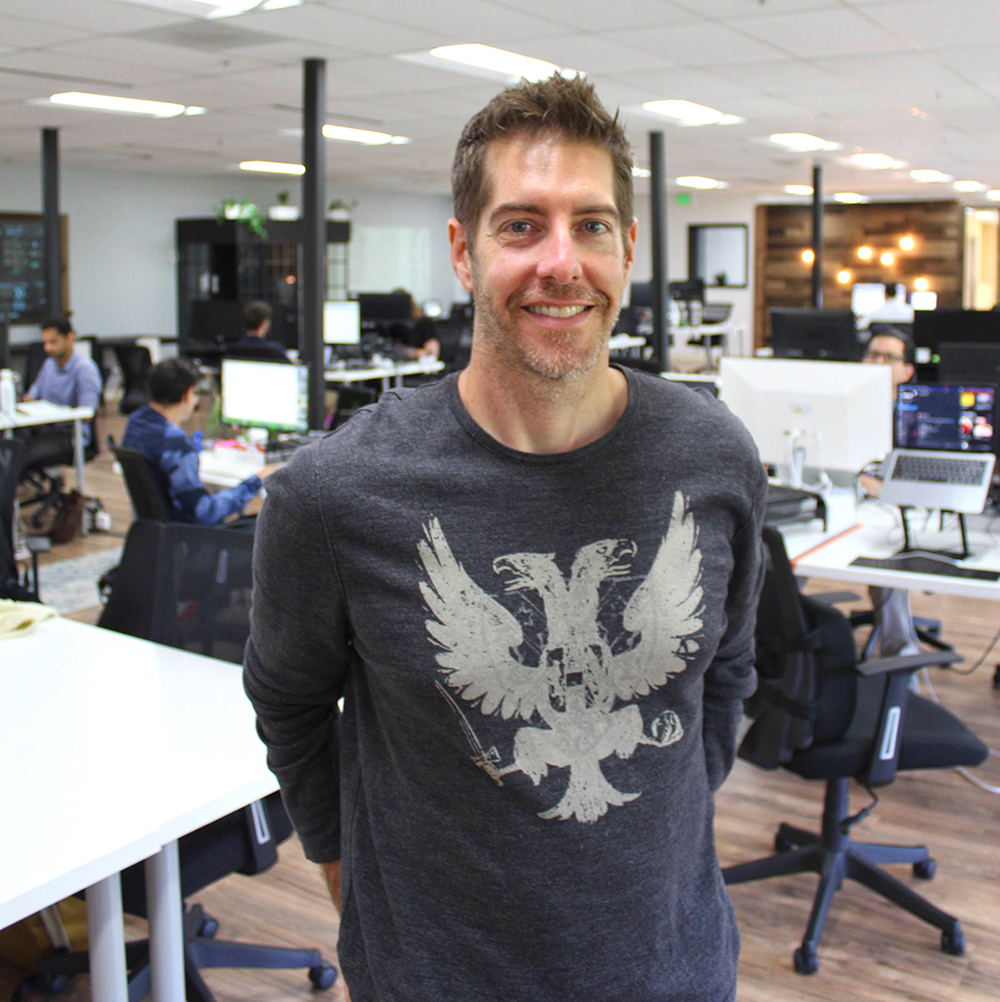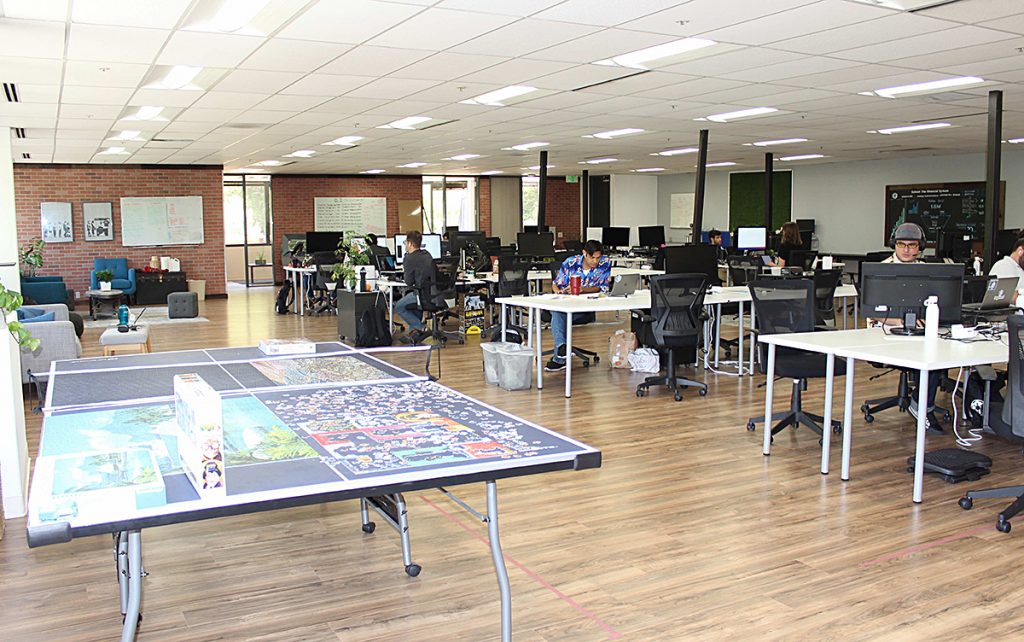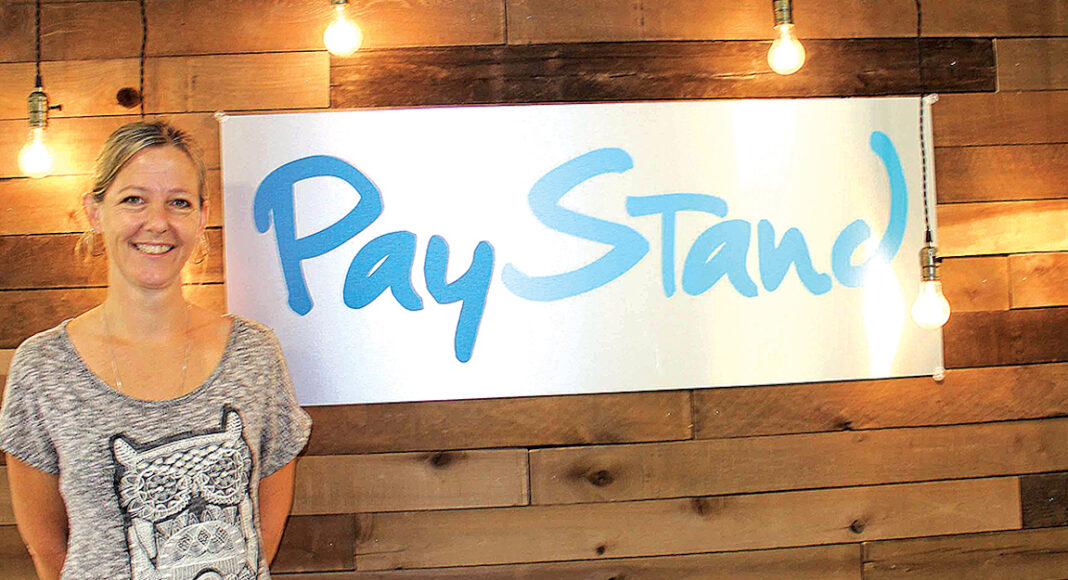Inside the Shell station at Scotts Valley Drive and Mt. Hermon Road, right next to the ATM there’s a similar-looking cryptocurrency dispenser where a person can buy the Ethereum cryptocurrency “Ether” with cash.
But if a person takes Glen Canyon Road under the freeway and hangs a left, they’ll come to the Green Hills Tech Center, where a booming start-up called PayStand is harnessing the code behind it—the “blockchain”—for something entirely different.
The company wants to do nothing less than completely upend what Mastercard has described as a $125 trillion business-payments industry.
“You could think of us as Venmo for B2B,” said Mark Fisher, the company’s v.p. of marketing. “We’re building a new commercial financial infrastructure.”
PayStand just announced it raised $50 million, in a funding round led by NewView Capital, with SoftBank’s Opportunity Fund, King River Capital, Industrious Ventures and Transform Capital also investing.
“I’m excited to have a company like this in Santa Cruz County,” said Aliyah Nance, the one-time Scotts Valley Banner employee who’s now hiring for 50 roles as v.p. of people at PayStand. “Santa Cruz County, as you know, has not historically provided the Silicon Valley-kind of jobs. It’s been a tough job market for the entire time I’ve lived here.”
From the low-rise, understated corporate exterior of the former Seagate location, to the ping-pong table covered with puzzle pieces in their second-floor, open-plan office, the company’s headquarters has the Silicon Valley look and feel. The Java and MySQL programming tomes on the bookshelf speak to an understanding of software history, but the collection of Surfer’s Journals remind you you’re just minutes away from some of the best waves in the world.
PayStand’s Series A lead funder was BlueRun Ventures, which was famously the first institutional backer of PayPal. Fisher says they’re poised for massive success on the business side of the digital-payments world, where PayPal has fallen short on multiple occasions.
He says what makes PayStand unique is not just the way it uses distributed servers (aka “the cloud”) to handle payments efficiently, but also how it has managed to tap into technology that’s mostly used these days for cryptocurrency transactions—the blockchain.
“There’s a lot of reasons that people are getting hyped up about it,” he said. “It disrupts a lot of what today is done in a very manual, error-prone, untrustworthy fashion.”
It’s not that different from buying real estate or a used car online via an escrow process, he notes.
“You deliver your funds into a third-party account that, in theory, you can’t tamper with and the receiving entity can’t tamper with,” he said of escrow-based transactions. “Someone in the middle is responsible for disbursing those funds when a certain set of rules have been agreed to.”

And that’s how the blockchain works: specific instructions are automatically executed after previously defined criteria are met. This is supposed to completely eliminate embezzlement and typos issues—and financial middlemen in general.
“We use the blockchain to assure transactions,” Fisher said. “It’s called our Assurety Blockchain. So, when someone pays over the PayStand Bank Network, you connect your bank in real time. You log in, and our infrastructure verifies in real time that you have funds available to send, and that the account is valid.”
PayStand runs a “public-private hybrid chain”—a fork of Ethereum, the blockchain dreamed up by programmer Vitalik Buterin in 2013.
Until recently, the world may have been most familiar with the Bitcoin blockchain system—coming to prominence with the roller-coaster ups and downs of digital currency speculation.
But Ethereum moved to center stage as so-called non-fungible tokens (NFTs) became a pop-culture phenomenon over the past year.
In March, Saturday Night Live even performed a skit where castmembers Kate McKinnon, as U.S. Secretary of the Treasury Janet Yellen, Pete Davidson, as an Eminem look-alike, and Chris Redd, resembling Morpheus from the Matrix, discuss how NFTs are a new digital art market based on blockchain technology.
So, since most NFTs are built on Ethereum, many people have already been introduced to the broader concept behind how PayStand operates its decentralized network.
“Ethereum is geared towards things like smart contracts,” Fisher said, “which is why we built on the Ethereum blockchain.”

PayStand reports 250,000 companies already use its platform, leading to $2 billion flowing through its tech and 1,007% revenue growth over the past three years.
And then there’s the business model: PayStand doesn’t bill customers each time they send or receive a payment—the hated banking fees. Instead, it uses a subscription model, charging based on the overall number of transactions. Fisher compares this to switching from Blockbuster to Netflix.
“Businesses can consume as many transactions as they want within a volume tier,” he said, adding he believes the time has come for a shake-up of financial technology in the corporate world. “Most [financial technology] today just puts a veneer on very bad, old plumbing.”
In addition to her newspaper roots, Nance has worked as chief financial officer for a variety of companies, from Sunland Gardens to Beachhead Solutions—and continues to serve as CFO for Santa Cruz nature photographer Frans Lanting’s studio.
But, she says, helping negotiate the latest $50 million Series C investment was something else.
“I was very involved in that,” she said, looking back on the 18-hour days—seven days a week—that ended up bearing fruit. “The due-diligence process to bring in that kind of money is very intense.”
As PayStand’s director of finance at the time, Nance says it was intriguing to see how eager the institutional money folk were to come on board.
“We’ve obviously got some magic sauce here,” she said. “The investors want to give us money long before we’re looking for it. So, that part’s the easy part here. The difficult part is explaining what we do.”
Now her attention has turned to attracting talent to an office that allows employees to work on the patio, in flip-flops, or after a surf session—provided they’re driven.
“We’ve brought in 55 new humans since January in our locations,” she said, pondering the rush of hypergrowth pumping through their Scotts Valley veins, as well as campuses in Draper, Utah and Guadalajara, Mexico. “Here we go: growth, growth, growth.”













